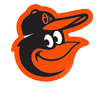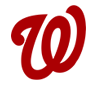The first major decision made by Paul Toboni and his new Nationals front office: To retain all of the players currently under club control for now.
The Nats tendered contracts to all of their unsigned 40-man roster players before this evening’s deadline, opting to keep all seven of their arbitration-eligible players. Infielders Luis García Jr. and CJ Abrams, left-hander MacKenzie Gore and right-handers Jake Irvin, Josiah Gray and Cade Cavalli all were tendered, with their salaries to be determined at a later date (either by agreeing to terms with the club or filing for arbitration).
Catcher Riley Adams, meanwhile, not only was tendered a contract but already agreed to terms on his 2026 salary, avoiding arbitration, the team announced. Figures were not revealed, but Adams made $850,000 this season and was projected to receive a raise up to about $1.5 million via arbitration.
Though these moves don’t necessarily guarantee all of the above players will be part of the 2026 roster, they do suggest Toboni and his newly assembled team at least are willing to pay all of them what they could command in arbitration, barring any trades this winter.
That’s particularly notable for García, Irvin and Adams, who appeared to be the most likely of the group who could’ve been non-tendered, essentially getting released and becoming free agents.
Despite his still-young age (25), García is the longest-tenured player in the organization, signed out of the Dominican Republic in 2016, then making his major league debut in 2020. During that time, he has grown into a high-contact hitter with decent power and speed, averaging 27 doubles, 17 homers, 18 stolen bases and a .732 OPS the last two seasons.
The two longstanding areas of concern with García: A lack of plate discipline and poor defense. He has drawn exactly 27 walks each of the last three seasons and owns a career on-base percentage of just .299. And though he showed improvement at second base in 2024, he regressed this season and rated as one of the worst position players in the majors with minus-17 Defensive Runs Saved.
After making $4.5 million in his first season of arbitration-eligibility, García is projected to earn around $7 million in 2026.
Irvin looked like a bona fide part of the long-term rotation plan one year ago, but the right-hander regressed in most every pitching measure, finishing the season with a 5.70 ERA, 1.428 WHIP and league-leading 38 homers surrendered while seeing his velocity and strikeout rate drop and his walk rate rise. Projected to make $3.3 million in his first year of arbitration, there were questions entering today’s deadline whether the Nats believed he should remain a back end starter in 2026 or not. It appears the organization believes he should.
Adams seemed to be a non-tender candidate one year ago but was retained by former general manager Mike Rizzo at a modest $850,000 salary. The 29-year-old, acquired from the Blue Jays in 2021 for reliever Brad Hand, spent more than three seasons here as the clear No. 2 catcher behind Keibert Ruiz but was thrust into the top role much of this season when Ruiz was unable to return from the concussion injured list.
Though he briefly saw an uptick in his production with more regular playing time, Adams couldn’t sustain it and finished the season with a .186/.252/.308 slash line over 83 games. His throwing numbers improved, but he still rated poor defensively for pitch framing and blocking. With Ruiz’s health and production likelihood still huge question marks, the Nationals had to decide if Adams should remain the fallback option behind the plate or if it’s time to acquire a more established backup who could step into the No. 1 role if needed. It appears they still believe he is a viable alternative to Ruiz.
Abrams, who has been García's double-play partner for three full seasons now, was never in danger of getting non-tendered, given his above-average production (32 doubles, 5.5 triples, 19.5 homers, 31 stolen bases) the last two years and still-affordable salary projection ($5.6 million) in his first year of arbitration. But the new front office does have to decide if it believes the 25-year-old is the long-term answer at shortstop, and if not, whether it wants to try a position switch to second base or to listen to trade offers this winter.
The Nationals face a similar dilemma with Gore, who is projected to earn a raise from $2.89 million to roughly $4.7 million. An All-Star this summer after a dominant first half, he regressed in the second half and finished with a disappointing 4.17 ERA and 1.353 WHIP while striking out an impressive 185 batters in 159 2/3 innings. With two years to go before the left-hander can become a free agent, the front office must decide whether to keep him and hope he leads the rotation to contention by 2027 or whether to explore trade possibilities now while he’s valuable to other clubs.
Gray and Cavalli, meanwhile, hope to be a big part of the Nats’ 2026 rotation, provided both can prove they’re healthy once and for all. Cavalli finally made it back from Tommy John surgery late this summer after more than two years of rehab and showed off the raw potential that made him a first-round pick in 2020. Gray, an All-Star in 2023, didn’t quite make it back from his July 2024 elbow ligament replacement this fall but appears ready to go next spring. Both right-handers are projected to make about $1.3 million.




-1745819772711.png)

